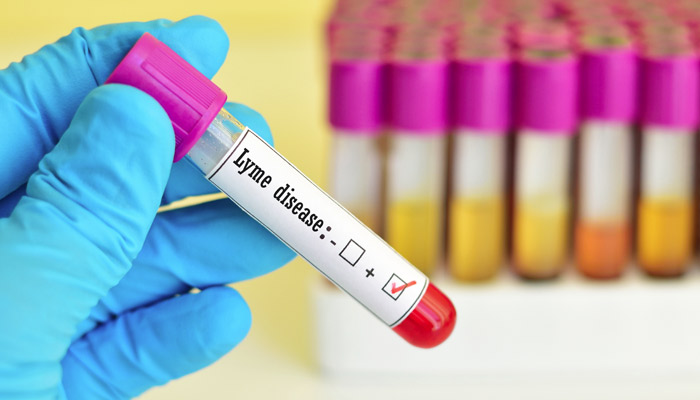
Lyme Diagnostics: We Need a New Standard of Care
New testing regimes are available but require regulatory support and approval
By Nicole Danielle Bell
Chronic Lyme Disease is sneaky. It hides from our standard tests and ruins lives. I spent most of my life blissfully unaware of the complexities of Lyme disease. Then, I was indoctrinated in a way that is all too common: It hit my family.
Lyme disease is often associated with a bulls-eye rash, fever and joint pain. My husband, Russ, didn’t have any of those symptoms. Instead, he presented with neurological symptoms, including depression, anxiety, mood swings and cognitive decline. Fortunately, I found links between Lyme and neurological issues in my research on his symptoms. Russ was an avid outdoorsman with multiple tick exposures, so I immediately added it to the list to discuss with his doctor.
But when the doctor tested Russ for Lyme disease, he tested negative. He had only 1 of the 5 bands needed for a positive result. The doctor recommended that we go to a neurologist, and there Russ was given a devastating diagnosis: early-onset Alzheimer’s disease. I was in shock. Russ was only 60 at the time and had no genetic predisposition for Alzheimer’s. He was also declining rapidly, and my engineering background told me there had to be a root cause.
As it turned out, I was right. Fifteen months after our first trip to the doctor, Russ was retested for Lyme. This time, he tested positive for Lyme and two other tick-borne co-infections associated with cognitive decline. Unfortunately, the diagnosis came too late. Russ had advanced to the late stages of his disease and passed away in January of 2022.
Losing Russ first to dementia and then to death brought me to a dark place. His disease shattered everything I thought I knew, and the remaining pieces no longer fit. I knew I needed to pour my energy into driving change—to ensure that those infected in the future don’t experience the chaos of the present.
So I returned to my engineering roots. Usually, when all seems lost, it’s time to step back and reanalyze the data. When Russ passed, I retired from my role as caregiver and returned to the discipline that always provided the answers I craved: science.
But science had failed me. Russ tested negative for Lyme in our very first doctor’s visit. Having worked for more than 15 years in an environment of innovative medical devices and diagnostics, I had to dig in and figure out why.

Nicole, her husband Russ and their two children
Why is it so hard to diagnose Lyme disease?
In my humble opinion, THE biggest problem with Lyme Disease is the current standard of care in diagnostics. A systematic review of thirteen different studies on the CDC-recommended test revealed 49–65% sensitivity across all stages of the disease—this means a person infected with the bacteria causing Lyme has a 35–51% chance of testing negative. For those outside the Lyme world, this seems impossible. How can a diagnostic test be about as accurate as a coin flip? But those immersed in Lyme live this harsh reality.
The science behind these poor results is clear. The test looks for antibodies, which peak weeks after the initial infection. This makes the test inappropriate for the earliest stages of infection, precisely when it is the most treatable.
For those in the later, chronic stages of the infection, the immune system is often suppressed. Weak immune systems don’t produce the same antibody levels and can cause titers to be below detection limits, as was the case for Russ.
Finally, antibody testing is useless for those who have been diagnosed and treated but are still sick. Antibodies identify exposure to a pathogen but cannot establish whether the infection is active. The COVID-19 epidemic was a great crash course in infectious disease diagnostics. A patient will test positive for COVID-19 antibodies if they had the virus, but an antigen or PCR test is needed to determine if the patient has the virus right now.
Direct detection is the preferred approach across infectious disease
Direct detection of the pathogen is a far better approach to diagnosis. Instead of looking for the immune system’s response to the pathogen, look for the pathogen itself. It makes perfect sense and is the approach the Infectious Disease Society of America prefers for infectious diseases.
But for Borrelia burgdorferi, the bacteria causing Lyme Disease, direct detection is more challenging than it sounds.Borrelia hides in tissues and is difficult to capture in a blood sample. The bacterial count has been reported to be as low as 0.1 per mL of blood. This is 3–4 orders of magnitude below the detection limits of conventional PCR.
At this concentration, the probability of detecting Borrelia in a blood sample with conventional PCR is about the same as the lifetime chance of getting struck by lightning. Read that again.
But science provides solutions. I read the research and mapped the Lyme Diagnostic space and became encouraged. A small company called Galaxy Diagnostics has commercialized the first antigen test for Lyme using a urine sample. Borrelia colonizes in the bladder and releases proteins unique to the pathogen.
Using sample enrichment techniques, the Lyme Borrelia Nanotrap® Antigen Test can detect this protein and confirm infection in all stages of the disease, including those who have been treated. Published results show 100% sensitivity in early-stage patients with the characteristic Lyme rash—a dramatic improvement over the status quo.
Galaxy Diagnostics is creating a new standard of care
I was so impressed with Galaxy’s technology that I decided to join the company and recently took on the position of CEO. In the past year, we’ve been working to raise the funds needed to scale the company’s technology to the next level. Not only do we need a new diagnostic standard of care for Lyme disease, but there is also a long list of co-infections, such as Bartonella and Babesia, that are equally difficult to diagnose. Galaxy’s mission is to provide doctors with a comprehensive toolkit to diagnose these infections accurately. Patients like Russ deserve an answer, and Galaxy is working to make that happen.
For more information on Galaxy Diagnostics, please visit www.galaxydx.com.

Nicole Bell (@nicoledaniellebell, www.nicoledaniellebell.com) is an author, entrepreneur and advocate for tick-borne and neurodegenerative diseases. Originally from Boston, Massachusetts, Nicole earned a Bachelor’s and Master’s of Science in Materials Science and Engineering from MIT and a Master’s of Science in Biomedical Engineering from Duke University. She advanced her professional career as an executive in a fast-growing medical device company. But when her husband became chronically ill, she took on her most challenging roles yet: caregiver and medical proxy. Her memoir, “What Lurks in the Woods,” details the harrowing experience and seeks to help others navigating chronic conditions. She is currently the Chief Executive Officer of Galaxy Diagnostics, a growth-stage company working to create a new diagnostic standard of care for tick-borne diseases.





